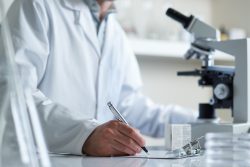 For centuries, the mythic qualities of young blood as a source of rejuvenation captivated human imagination. These beliefs, though rooted in delusion and cruelty, contain a kernel of scientific truth. Studies in heterochronic parabiosis, where the blood systems of young and old animals are connected, have demonstrated that this process can rejuvenate the older participant and accelerate aging in the younger. The exact mechanisms remain unclear. However, recent research has identified extracellular vesicles in the blood as key agents driving many rejuvenating effects.
For centuries, the mythic qualities of young blood as a source of rejuvenation captivated human imagination. These beliefs, though rooted in delusion and cruelty, contain a kernel of scientific truth. Studies in heterochronic parabiosis, where the blood systems of young and old animals are connected, have demonstrated that this process can rejuvenate the older participant and accelerate aging in the younger. The exact mechanisms remain unclear. However, recent research has identified extracellular vesicles in the blood as key agents driving many rejuvenating effects.
Extracellular vesicles are small vesicles composed of a lipid bilayer similar to that of cell membranes. Secreted by cells, these vesicles carry diverse molecular cargoes, such as proteins and microRNAs, facilitating intercellular communication. Research has demonstrated that EVs sourced from young blood can confer benefits to older organisms, but the complexity of the molecular interactions involved means that research into the precise mechanisms is still actively underway.
Researchers concentrated on small EVs measuring 200 nanometers or less. To assess their rejuvenating effects, older male mice were given weekly injections of these small EVs sourced from either humans or young mice. The treatment began when the mice were 20 months old and continued until their death. For comparison, control groups of both young and the old mice received equivalent doses of phosphate-buffered saline. The results were notable: the treated mice experienced an increase in median lifespan of 34.4 vs 30.6 months, a significant extension considering the age at which treatment commenced. Additionally, the treatment enhanced various indicators of health span, including reduced frailty and better hair retention.
Further exploration into the treatment’s impact revealed that even a short, two-week regimen significantly reduced the presence of senescent cells and lowered levels of reactive oxygen species across various tissues, aligning them with those found in young control subjects. Similar decreases were noted in the levels of advanced glycation end products and lipofuscin, of which both are deleterious compounds linked to aging characteristics. Proteomic analysis across multiple tissues showed that the small extracellular vesicles had a broad impact, primarily addressing issues like epigenetic changes, mitochondrial dysfunction, and genomic instability, which are recognized as key aging markers. Notably, in muscle tissues and the hippocampus, the treatment effectively rejuvenated markers of mitochondrial health, such as DNA content, ATP production, and mitochondrial structure and quantity.
According to the researchers, since the biological activity of small EVs shows minimal species specificity, they experimented with injecting old mice with small EVs taken from the blood of young humans. This approach replicated many of the positive outcomes seen in earlier experiments. If benefits are reciprocal, this could potentially address the issue of sourcing sufficient quantities of EVs for human therapies.
To view the original scientific study click below:
Small extracellular vesicles from young plasma reverse age-related functional declines by improving mitochondrial energy metabolism





